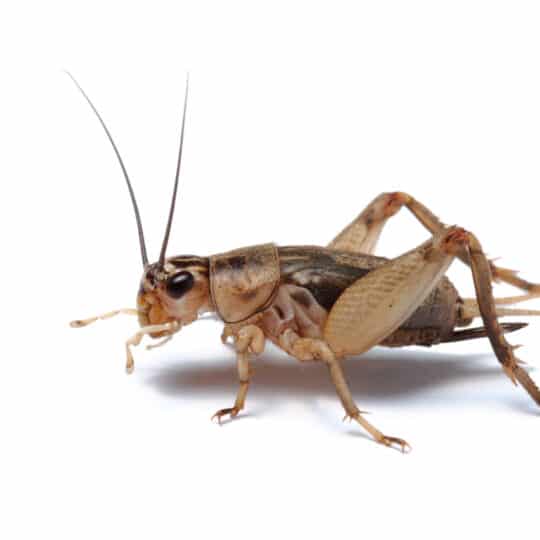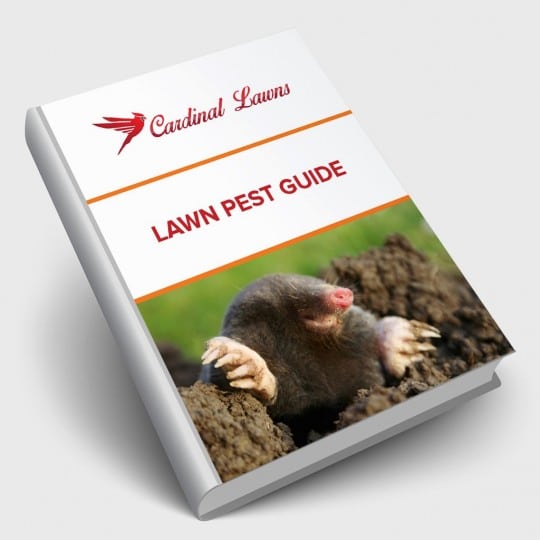The Pros and Cons of Crickets
Plus Pest Control Options
Posted
August 1, 2024

A summer evening is known for its sights and sounds, such as flickering lightening bugs and chirping crickets. However, these sweet lullabies are less attractive when they echo throughout your home. Here are some cricket pros and cons, plus ways to help control their population in and around your property.
Cricket Pros
All living things, no matter how creepy, have a purpose on this planet. Besides the rhythmic soundtrack they provide to a summer night, crickets play an important role around your yard.
- Natural pest control. Crickets feed on a variety of smaller insects and pests, including ants and aphids.
- Soil enrichment. Crickets help break down plant material and organic matter which helps make the soil more fertile for healthy plant growth.
- Food source. Crickets are lower on the food chain and provide essential nutrients to birds, reptiles, and small mammals.
- Cultural significance. In some cultures, crickets are a symbol of good luck and kept as pets because of their chirping. They’re also considered a delicacy and farmed as a source of protein.
For all of their benefits to the natural and spiritual world, crickets are not adored by all.
Cricket Cons
There are two sides to every story, and when it comes to crickets, they’re not always seen as a pleasant sight or sound.
- Crop damage. Crickets feed on a variety of plants, which is not a good sign for farmers or gardeners growing vegetables, grains, and ornamental plants.
- Structural damage. Crickets are known to invade homes and buildings looking for additional food and shelter. Once inside, they can chew on fabrics, paper, and wood, leading to costly repairs.
- Noise. While the distant sound of chirping may lull some to sleep. A cricket that’s found its way inside your home can cause a disturbance with its louder, more constant chirp.
- Health issues. Cricket droppings and shed skin cells can trigger allergic reactions.
If crickets are becoming more of a pest than a pleasure, there are ways you can help control their population.
Cricket Control
While one or two crickets in your home may not be cause for alarm, there’s more of a chance that other crickets could find their way in and infest your indoor space. Crickets are attracted to warm, moist environments which is why they’re often found in gardens, basements, and crawl spaces. If you’d like to keep them out of yours, here are some options.
- Maintain outdoor spaces. Remove leaves and other debris and move wood piles away from your home. Keep your grass trim to limit hiding spots.
- Maintain indoor spaces. Keep your home clean and clutter-free to remove forgotten food sources and possible cricket eggs.
- Perimeter control. Sprinkle diatomaceous earth, spray neem oil, or use another pesticide around the perimeter, entry points, and infested areas of your home.
- Change outdoor lighting. Bright lights attract crickets. Swap white outdoor bulbs with yellow sodium vapor lights to reduce attraction.
- Control moisture. Improve soil drainage in and around gardens outside. Fix leaky faucets and reduce humidity levels inside basements and crawl spaces.
- Seal entry points. Fill any cracks and gaps in doors, windows, and the foundation with caulk or weatherstripping. Repair or replace window and door screens with large gaps or holes.
Regularly inspect your yard and home for signs of cricket damage. The earlier you act, the less likely you’ll have to deal with a large infestation. If you want to enjoy the peaceful chirp of crickets from a distance, contact Cardinal Lawns for assistance controlling crickets and other lawn pests in and around your home.

Download Your FREE Lawn Pest Guide
Pests become most prevalent during the heat and humidity of summer. Take some time to learn about the signs of infestations before any damage can be caused to your landscape. This handy guide will teach you how to spot common lawn pests and how to keep them from causing harm to you and your property.